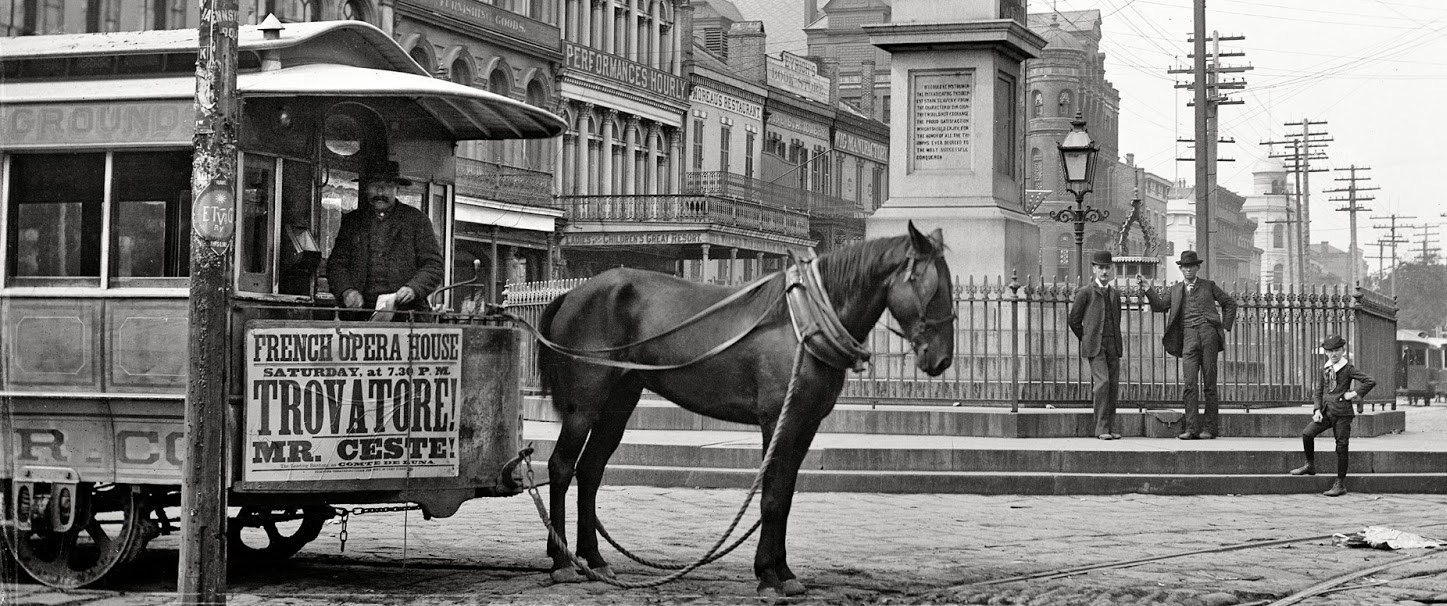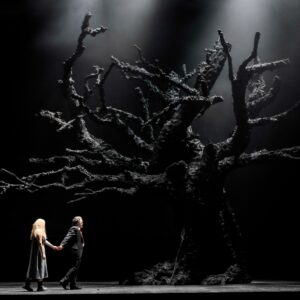This may have been this season’s most anticipated premiere in the world. Tickets for all performances of Die Walküre, the last production conducted by Antonio Pappano, departing in glory after twenty-two seasons at the helm of the Royal Opera House, sold out in a matter of hours already in January. The lucky ticket holders did not give up the trip to London even when it was announced that Lise Davidsen had withdrawn from the role of Sieglinde. The first tickets began to be returned to the box office only several months later.
I had other plans, especially since I hoped for a complete Ring before the end of Pappano’s tenure. However, it proved impossible for the venture – directed by Barrie Kosky, with sets by Rufus Didwiszus (exquisitely lit by Alessandro Carletti) and costumes by Victoria Behr – to be completed as originally planned, primarily for financial reasons. I changed my mind encouraged by friends – having been given a ticket, and lured by their hospitality as well as the prospect of a heated exchange of opinions in the long interval between Acts Two and Three, I packed my suitcase and set off for London.
I did not see Das Rheingold, which had mixed reviews, but my intuition suggested that my fellow critics were not yet able to see the forest among the trees. After reading the first reviews of Die Walküre I thought my intuition had been correct: the forest had begun to take shape. Yet little did I know that my expectations concerning the staging (which were more than met) and the feeling that the cast change would be a change for the better (the choice of Davidsen’s replacement turned out to be excellent on all counts) would clash so strongly with my disappointment with Pappano’s musical concept.
Stanislas de Barbeyrac (Siegmund) and Natalya Romaniw (Sieglinde). Photo: Monika Rittershaus
Let me start with the staging concept, which after Das Rheingold provoked a wave of comments that Kosky allegedly intended to reduce the message of the entire Ring to a warning against the looming climate disaster. Much of this is the fault of Kosky, who did not resist the temptation to provide extensive explanations, the most memorable among which was that he used the recent bushfires, some of the most tragic in Australia’s history, as the starting point for his vision. The audience believed him, and in the first part of the tetralogy focused primarily on the lack of any reference to water, on the charred trunk of the mighty World Ash Tree and the almost constant presence of Erda – a figure of the tormented Mother Earth – as interpreted by the aged actress Rose Knox-Peebles, who remains on stage even during the warning “Weiche, Wotan, weiche” uttered offstage.
It is possible that Kosky, like most directors working on the Ring in stages, listens carefully to the audience’s voice and revises the original concept under their influence. Yet as I was watching Die Walküre, I could not help thinking that he had had something more in mind from the beginning. That his tetralogy would not be a journalistic story about the dangers of the modern world, but – as in Chéreau’s case – an attempt at a contemporary redefinition of the myth redefined earlier by Wagner himself. Das Rheingold is always problematic: it is essentially a highly condensed introduction to the drama proper, which begins in Die Walküre. That the story told in it is the most human of the entire Ring is something I have written about many times before. Kosky, however, has shifted the emphasis: he points out that all the shocking aspects of this narrative – the the Völsungs’ incestuous love, Brünnhilde’s almost equally incestuous fascination with her half-brother Siegmund, and the cruel filicide committed by Wotan (through Hunding) in the name of a specifically understood raison d’état – stem from the necessity of the myth, in which Wagner focused, as if in a lens, all the evils of his own era. Such things happen when the world is on fire. History once again has come full circle. That is why Kosky has turned his Walküre into a story of a very contemporary war – a liminal situation which cannot be understood by anyone who has not experienced it. A situation that unleashes the worst instincts in both the perpetrators and the victims.
The discreet yet relentless presence of Erda – this time interpreted by the equally aged actress Illona Linthwaite – though seemingly at odds with the composer’s intentions, in fact helps today’s audience delve into the deep humanism of Die Walküre. The mysterious creature, formed by Wagner from several deities from Norse sagas and tales collected by the Brothers Grimm, does not fall back in Kosky’s version into sleep after uttering the prophecy from Das Rheingold. It continues in lethargy, omniscient and, therefore, powerless. What hides underneath Erda’s frail body, bared for most of the performance, we can only guess from the anguish visible on her face. She is not only Mother Earth and Brünnhilde’s mother. She is a compassionate mother of all that lives in this world and takes the lives of others in the name of its own survival. It is from her numb hands that Siegmund takes the flowers that herald the Völsungs’ spring. It is from her bosom, joined with the mighty ash tree, that Siegmund plucks the sword promised to him by his father. It is Erda who, with a desperate gesture, makes Siegmund get used to death, pushing the half-charred corpse of a warrior into his arms. She will be the one to watch over Brünnhilde punished by Wotan.
Soloman Howard (Hunding). Photo: Monika Rittershaus
Erda looks helplessly at the war, the image of which, as seen by Kosky and Didwiszus, brings to mind harrowing associations with Russia’s current invasion of Ukraine. Not only because the terrified Siegmund, looking like a hunted animal, bursts onto the stage in a blue T-shirt and yellow hoodie. This somewhat too obvious gesture recedes into the background in the face of phenomenal directorial work revealing the true aftermath of all armed conflicts. Symptoms of post-traumatic stress are visible not only in Sieglinde and Siegmund, but also in Hunding, who serves on the other side of the barricade, and who masks his trauma with unimaginable contempt and aggression. The apparent calm of the gods controlling this war hides a fear of losing power. Pushing carts with piles of decomposing corpses – as if they were not carting them off the battlefield, but exhuming them from a mass grave – the Valkyries behave like raging Maenads: or women who have completely gone out of their minds under the influence of wartime atrocities.
Kosky skilfully waves his way between literalism and symbolism. The ash tree mutilated by Wotan is as ubiquitous on stage as Erda. It can be recognised in the material of the furnishings from Hunding’s hut. When Siegmund pulls the sword from the wall of his future assassin’s house, we realise that we have before us only a fragment of a tree trunk that cannot be seen in its entirety. It is in its cavernous recesses that Sieglinde hides from the shame of her incestuous night with her twin brother. Wotan uses a spear carved from an ash branch to hold Siegmund and help Hunding complete the most gruesome act of carnage I have ever seen on stage. It is the ash tree that accepts Brünnhilde into its scorched interior and is set on fire by the father of the gods.
What will also be etched into the audience’s memory are the sounds of animal fear, the poignant images of loneliness, power and violence, evident in the characters’ eyes and in the barely suggested but telling changes in their facial expressions – as in Act Three, in Brünnhilde’s dialogue with Wotan, who for a moment loses his composure and cannot hide his dismay at his daughter seeing right through him. It is certainly possible to argue with Kosky’s stage concept. Yet it impossible to ignore the mastery of his directorial craft, impressive even in terms of theatre, let alone in the context of working with singers.
And the singers chosen by Pappano made up a dreamlike cast, additionally balanced by the presence of Natalya Romaniw, who replaced Lise Davidsen, making her debut as Sieglinde. I had the good fortune to hear Romaniw live for the first time nine years ago, even before British critics discovered her as the Foreign Princess in the Glasgow production Rusalka. Already at that time I was awed by her powerful, yet clear and round soprano, which has since gained an even more beautiful, compellingly lyrical sound. Combined with the artist’s exceptional intelligence and sensitivity, it predestines her to this particular role in Wagner’s oeuvre, which Davidsen, in my opinion, already “outgrew” a few years ago. Nor can I imagine Davidsen as Siegmund’s twin sister, both character- and voice-wise, for Stanislas de Barbeyrac, included in the cast from the beginning, possesses the truest lirico spinto tenor, with a beautiful golden tone and all the makings of a fine dramatic voice, albeit in the old style. Though it has to be said that both protagonists were unable to spread their wings in Act One, strangely stifled in Pappano’s interpretation (I will return to this later). In Act Two they revealed their full potential, and in Act Three Sieglinde’s phrase “O hehrstes Wunder!” shot up to the ceiling of the theatre with such luminous power that it took everyone’s breath away. Soloman Howard was an outstanding Hunding with his terrifyingly dark bass, which is perfect for the role and the expressive power of which was further enhanced by Kosky’s concept. The role of Fricka was handled superbly by Marina Prudenskaya. Hers is a mezzo-soprano that is rather harsh, but authoritative and objective enough in tone to raise the dispute with the equally cold and repulsive Wotan to a level above that of a simple marital quarrel. Wotan, portrayed by Christopher Maltman, impressed me much more than I had expected. The English singer’s flexible baritone, beautifully balanced in all registers, colourful and exquisite articulation-wise, enabled him to create a character that was as repulsive as it was irresistible – pure evil, consciously enhanced by musical means, without resorting to the recently overused character singing that verges on caricature. A highly convincing Brünnhilde – girlish, full of energy and technically superb – came from the Swedish soprano Elisabet Strid. In this production even the eight Valkyries got a truly regal cast – led by Lee Bisset, the memorable Isolde from Longborough, as Gerhilde, Maida Hundeling as Helmwige and the excellent Rhonda Browne as Schwertleite.
Elisabet Strid (Brünnhilde) and Christopher Maltman (Wotan). Photo: Monika Rittershaus
The problem was that Pappano conducted Die Walküre – it is hard to say whether out of a need to distinguish himself from other conductors, or out of a temptation to “align” Wagner’s work with parallel currents in Italian music – like a number opera, like a sketch for the Milan version of Don Carlos or for Otello, premiered at La Scala three years later. This failed to work already in Act One, at the level of microform, when the sweeping Wagnerian tale got bogged down in unexpected halts in the narrative, stifling the singers’ verve and pushing to the background the climaxes carrying this remarkable story forward. Hope returned in the phenomenally conducted introduction to Act Two, but was extinguished definitively in Act Three, after a sluggish and not very precise Ride of the Valkyries. Most importantly, however, key elements of the work were lost in Pappano’s approach: the ecstatic finale of Act One did not resonate, the intricate interplay of recurring motifs was lost in many places, and after the final call “Loge, hör! Lausche hieher!” the fires barely flickered, instead of bursting into a feast of flames in the orchestra.
It is a pity, because this masterpiece was wisely staged and wonderfully sung. It is a pity that such an outstanding conductor did not bid farewell to his audience with an opera closer to his heart. Finally, it is a pity that no one pointed out to him that he had made a wrong decision.
Translated by: Anna Kijak



